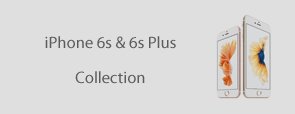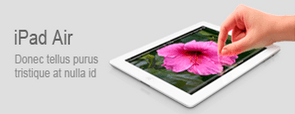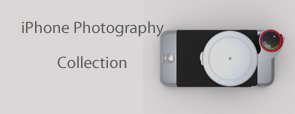Arduino Starter Kit
This kit contains eight prototyping modules, including the Arduino-at-heart module. It’s everything you need to get started with electronics and programming.
Make your own Etch-a-Sketch! Program a visual display! We’ll walk you through the basics using the Arduino programming environment, without the breadboarding, soldering or wiring normally required. Perfect for hackers, designers, makers and tinkerers of all levels.
Recommended Age: 14+
- Includes everything you need to get started (battery + power included!) right out of the box
- Build with 8 Getting Started sketches, including a DIY Etch-a-Sketch™, Mouse Control and hundreds more from Arduino’s community!
- Communicate with software (Processing, MaxMSP, Flash etc…)
- Snap modules easily to 3 inputs and 3 outputs on the Arduino module, as well as additional I/O for advanced hardware interaction
- Access to community support from Arduino AND littleBits
BIT MODULES AND ACCESSORIES INCLUDED
- 1 Bargraph
- 1 Button
- 1 Power
- 1 Fork
- 1 Arduino
- 1 Battery + Cable
- 2 Dimmers
- 1 Servo
- 1 Mounting Boards
Product Specifications.
- Dimensions (mm): 254.0(H) x 203.2(W) x 38.1(D)
- Product Weight: 0.86 lbs (0.39 kg)
- Recommended Age: 14+
Tips & Tricks
We take care of the electronics so you can focus on coding
Welcome to the wide world of Arduino! The Arduino At Heart™ module allows you to easily incorporate computer programming into your littleBits circuits. It is built upon the Arduino™ programming environment. If you’re new to programming microcontrollers, littleBits takes care of the electronics so you can focus on coding. All of the resources available for the Arduino community, including community support, can be utilized with this module. There are three inputs and three outputs so you can program advanced hardware interactions or communicate with software. You’re only limited by your imagination!
Ready to take your Arduino module for spin? Get up to speed on the basics by checking out our Getting Started Guide and 10 introductory sketches, or viewing the setup video below!.
Hungry for more? Check out these tips & tricks:
Digital vs. Analog Input:
The Arduino Module can read two types of input signals. The first is digital, which is a simple “on” or “off” signal. This is the type of signal you will get from a button or trigger. In the Arduino coding language, on is a HIGH signal and off is a LOW signal. All three inputs on the Arduino Module can read digital signals.
The other type of signal is an analog signal. Analog signals aren’t just “on” or “off”. They work like a dimmer switch or a volume knob. In the Arduino coding language, analog signals are given a value between 0 and 1023. If you connected a dimmer module to your Arduino and turn the knob up (clockwise), the value would slowly rise from 0 to 1023. The inputs on the Arduino module marked a0 and a1 both accept analog signals.
Darth Vader and Luke Skywalker: Using Analog Input To Make Selections
In the example below we have two of our coin cell power modules hooked up to dimmer modules. One dimmer is turned down very low, and the other is turned up very high. You’ll notice that when we plug in the Darth Vader dimmer, the speaker connected to the Arduino plays his theme music. When we plug in Luke Skywalker, it plays Luke’s theme music. If, while the Luke Skywalker is plugged in, we turn his dimmer way down, the theme music changes (Oh no! Luke’s gone over to the Dark Side!).
This project works by using an analog signal from the dimmer to choose which part of the program to run. We can set the parameters in the code. If the input is between 0 and 511, then Darth Vader’s music plays. If the input is greater than 511, then Luke Skywalker’s music plays.
With values ranging from 0 all the way to 1023, it’s possible to make a lot more than two selections using analog input. For our 8-bit Jukebox project, we used a light sensor and four different light filters to make four different selections using only one input.
One of the challenges to offering lots of different selections with an analog input like a dimmer is being able tell exactly what value you have selected. Attaching a number module to a dimmer can make it much easier. You’ll have an easy way to make up to 100 different selections.
In our 8-bit Jukebox project, we wanted a way to choose between four different songs. We thought about just using four different buttons to make the selection, but there are only three bitsnap inputs on the Arduino Module, so we had to get creative.
What's in the kit?
Includes everything you need to get started (battery + power included!) right out of the box. The kit comes with the Arduino-at-heart module plus 7 other powerful prototyping modules: servo, bargraph, button, 2 dimmers, fork, power, as well as mounting boards to keep your circuit in place.
Video's & More
Littlebits Arduino Starter Kit Video
Create an Etch-a-Sketch
Use the Arduino module and the included dimmers to draw on your computer screen, just like an etch-a-sketch! The two dimmers send analog data into the Arduino and output serial data to Processing, a programming language that lets you control visual information on your computer. By moving the dimmers, you control movement on your screen and can draw lines.
Join the littleBits + Arduino Discussion
With the littleBits Arduino Coding Kit, you may have ideas of what you want to create but want to bounce ideas off of other makers and creators. Both littleBits and Arduino, have active community forums where you can engage with people like you and find inspiration for new ways to use your kit.
Additionally, the littleBits site has thousands of user-created projects that will give you inspiration and tutorials for your creations. Join in the discussion!
Included: the Arduino-at-heart module
You can now easily incorporate programming into your littleBits circuits! It’s everything you know and love about Arduino without the breadboarding, soldering or wiring. Simply plug into your computer, snap together needed modules, and program away! You focus on the code, we'll cover the electronics.
Make Your Own Analog Pong Game
Use the kit and some simple programming to create your own analog pong video game. The sketch can be downloaded at the littleBits site and will allow you to send two analog sensor values from the Arduino module to a Processing sketch that is running a version of the game Pong. The Pong paddle positions move based on the sensor values in this two player game. Have fun while learning to program!
Limitless possibilities
As you grow more familiar with Arduino and programming, littleBits Arduino-at-heart module will grow with you and support more advanced projects. For example. play rock, paper, scissors against this animatronic hand using the Arduino Coding Kit and other littleBits modules (not included)
The hand is controlled by littleBits' new Arduino module and programmed to randomly move into rock, paper, or scissor position when prompted by you.
This wireless interaction begins with a press of a button on your own glove. 1,2,3 shoot. Choose your hand position, and the animatronic hand will do the same. The Arduino module will be able to tell who wins and will play either a tune of victory or defeat.
This is just one of many advanced projects you can make with littleBits and the Arduino module









